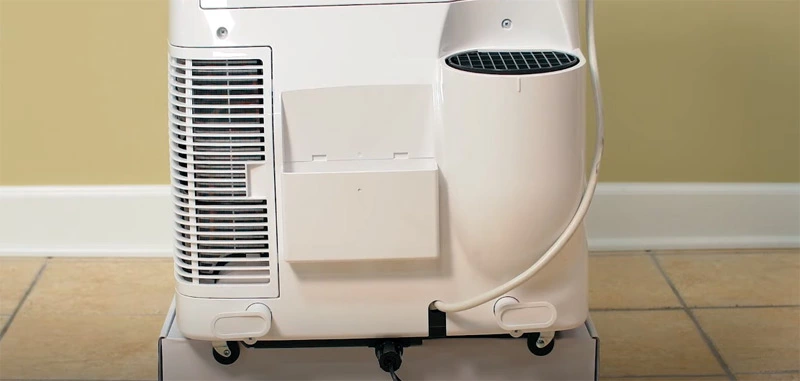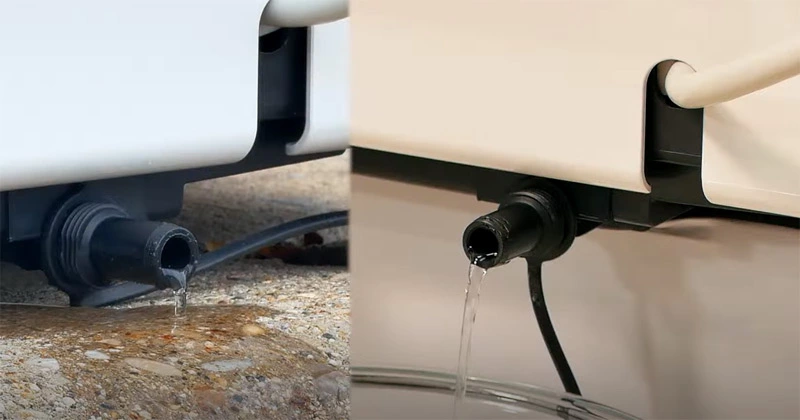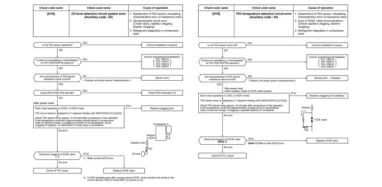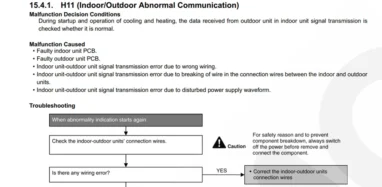Do portable air conditioners need to be drained? Certain conditions such as climate settings and usage may require you to drain the water tank if you live in an area where the weather is very humid for extended periods. Excess water may build up in the water collection tank too quickly to be recycled in very humid weather.
The tank may need to be drained often to remind you an FL indicator code will appear in and display when the water collection tank is full and needs to be drained.

To drain the condensing water from the collection tank, first, turn off the unit and unplug it from the wall outlet. Remove the vent hose assembly from the unit. The drain port is located on the back of the unit at the bottom. If the unit needs to be drained into a container, carefully lift the entire unit onto a firm and stable platform high enough to empty ate it into a container place under the drain plug.
Make sure the container can hold at least 28 ounces of water. To begin draining, turn the drain cap counterclockwise and remove it. Next, pull out the drain plug carefully. The water will start to drain. Remember to check and empty the container frequently to avoid overflows.
Once draining is complete, remove the container and use a towel or soft cloth to dry any wet areas. You can also move the unit to a location that has a floor drain or an outside area where water can be drained to avoid leakage. Be extremely careful when moving the unit with a full water collection tank.
Moving the unit with the tank full can cause the tank to overflow as before removing the drain plug in the cap to release the water into the floor drain. The most convenient method of draining the unit’s to set it on the edge of an entry door and allow it to drain directly outside.
Gravity will naturally move the water from the water tank to the floor drain or container. Once draining is complete, remove the container and use a towel or soft cloth to dry any wet areas. Reinsert the drain plug fully if the drain plug is not fully inserted and properly sealed water will leak from the unit place.

The drain cap covers over the drain plug clockwise to screw it on to the drain port. Make sure it is securely in place. Reattach the vent hose assembly to the unit until it snaps into place.
Extend and shape it into an inverted you near the vent panel as shown to help prevent any rainwater from entering and collecting in the unit. Plug the unit back into a dedicated wall outlet.
You are now ready to use your LG portable air conditioner.
Are portable air conditioners worth the money and your time? Please refer to our previous guide for more info.
If you ask for our portable aircon recommendation, we will vote for hisense portable ac and Electriq portable air conditioner


